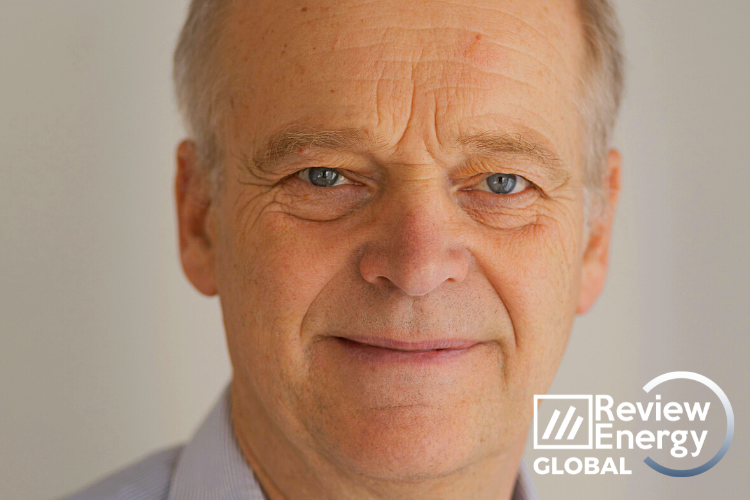
Floating wind has not yet changed the industry, but it will: Henrik Stiesdal
The wind energy sector has not grown by chance, let alone by aimless winds. It has been the creative minds of new ideas that have driven wind to become what we know today as one of the world's most iconic clean energies.
According to the Global Wind Energy Council, 2022 was the third best year ever for new capacity, with 78 GW added worldwide and total global installed capacity growing to 906 GW. This represents a year-on-year growth of 9%.
And on the road to growth in the sector, Henrik Stiesdal, Founder, Chief Technical Officer and Board Member at Stiesdal, has set a milestone. Considered a pioneer of wind energy, he built the first test turbine in 1976 and sold the licence for the commercial design to Vestas in 1979, kick-starting today's wind industry.
Tambipen was CTO of Siemens Wind Power for 27 years until his retirement in 2014 and has received a number of awards, including the Poul la Cour Award of the European Wind Energy Association in 2011 and the German Renewable Energy Prize for Lifetime Achievement in Wind Energy in 2014.
Review Energy wanted to talk to him to find out about his most iconic moments in the wind energy sector and to understand the path that has led him to where he is today.
Review Energy (R.E.): You designed one of the first wind turbines. What were your motivations at the time? How hard was it?
Henrik Stiesdal (H.S.): At the time, my motivation was to establish low-cost power at the family farm. I did not have anything larger in mind, and the notion of climate change was not really known when I started, in 1976. It was hard to figure out, but not too hard for someone with an interest in mathematics and physics.
R.E.: What mechanisms allowed you to enter the wind industry? Was it easy?
H.S.: I entered the wind industry proper by designing a commercial turbine for the partner I had teamed up with, Karl Erik Jorgensen. He was an excellent craftsman but did not have a theoretical background, so I did the design, and he did the machining and assembly. The first prototype came up in 1978, and the first commercial turbines in 1979. We did not have the power to build a genuine factory, so we decided to find a licensee for our technology. That licensee became Vestas; we made the agreement in the fall of 1979, and this is how they got started in wind. It was not easy to make all this happen, but in the end we managed.
R.E.: What do you think was the main driving force behind wind power in its early days and how has that changed today?
H.S.: For the pioneers, the main driving forces were typically quite narrow-minded, like my own, i.e., to get energy independence at their farm or dwelling. For the industry that grew out of the pioneering activities the main driving forces were commercial. Here was a new and open business field; the companies went into it to exploit the commercial opportunities.
R.E.: Can you identify the most difficult challenges wind has faced since its inception?
H.S.: There have been many challenges, both technical and non-technical. In the early years, the technical challenges were considerable, and at some points in time the industry was faced with large, shared challenges, such as when the dominant blade supplier went bankrupt in 1986 due to overwhelming warranty issues. Later, the challenges have mainly been market-oriented, such as when the California market collapsed in 1987, when the US support mechanisms were for decades of a stop-go nature, or when nowadays planning processes place severe obstacles on the buildout.
R.E.: What do you think has been the sweetest time for wind and why?
H.S.: The sweetest times for wind have been when we saw the great booms – the California boom in 1983-86 and the global boom in 2005-08, before the financial crisis.
R.E.: Do you think there was a before and after at any point in history for wind?
H.S.: There have been some major events, but not really a before and after point. The closest we get are perhaps the California bust in 1987 and the first offshore wind farm in 1991.
R.E.: How do you think European policy has responded to wind's progress?
H.S.: European policy has generally responded very well to wind's progress, since 1980 introducing legislation that permitted the installation and grid connection of wind turbines. At the present time we do have a mismatch between ambition and execution, however. The ambitions are high for wind as the main source of electricity in Europe, but the policies do not follow suit, still not able to solve the challenges of way too slow permitting processes.
R.E.: The EU wants wind power to more than double the 200 GW installed today by 2030. Do you see this as possible?
H.S.: Technically it is clearly possible, but when it comes to planning obstacles, I am worried.
R.E.: How has floating wind changed the industry?
H.S.: Floating wind has not yet changed the industry, but in the long run it will, since it has such large potentials for broadening the scope and multiplying the available resource. Introducing floating wind will expand the offshore wind resource by a factor of 10.








Comentarios
Sé el primero en comentar...